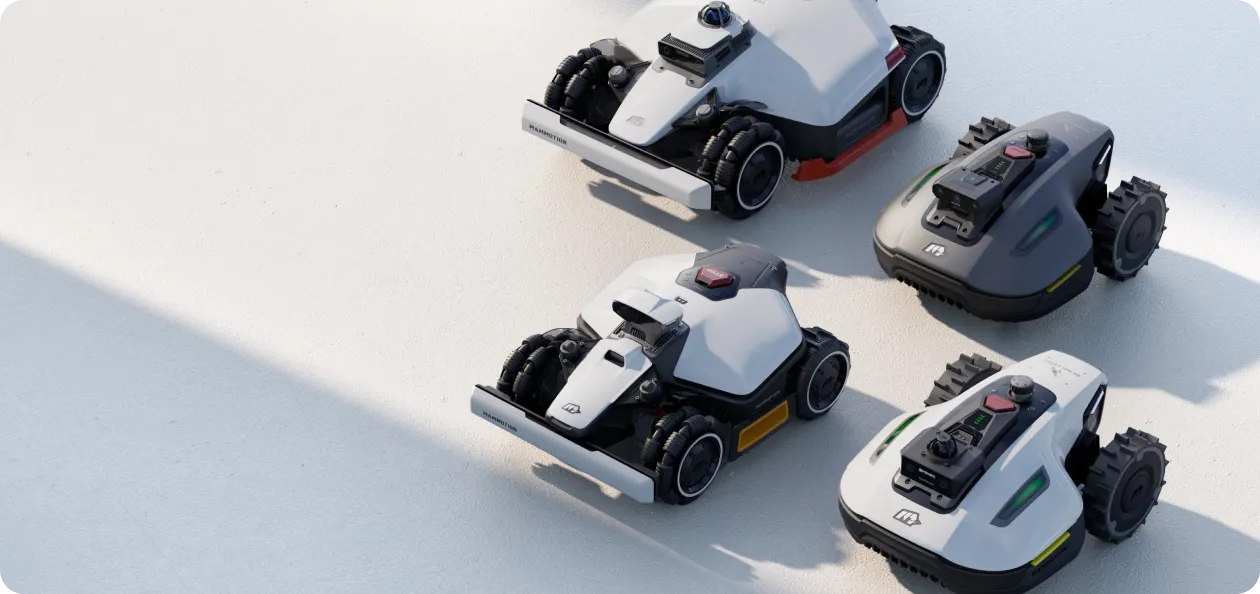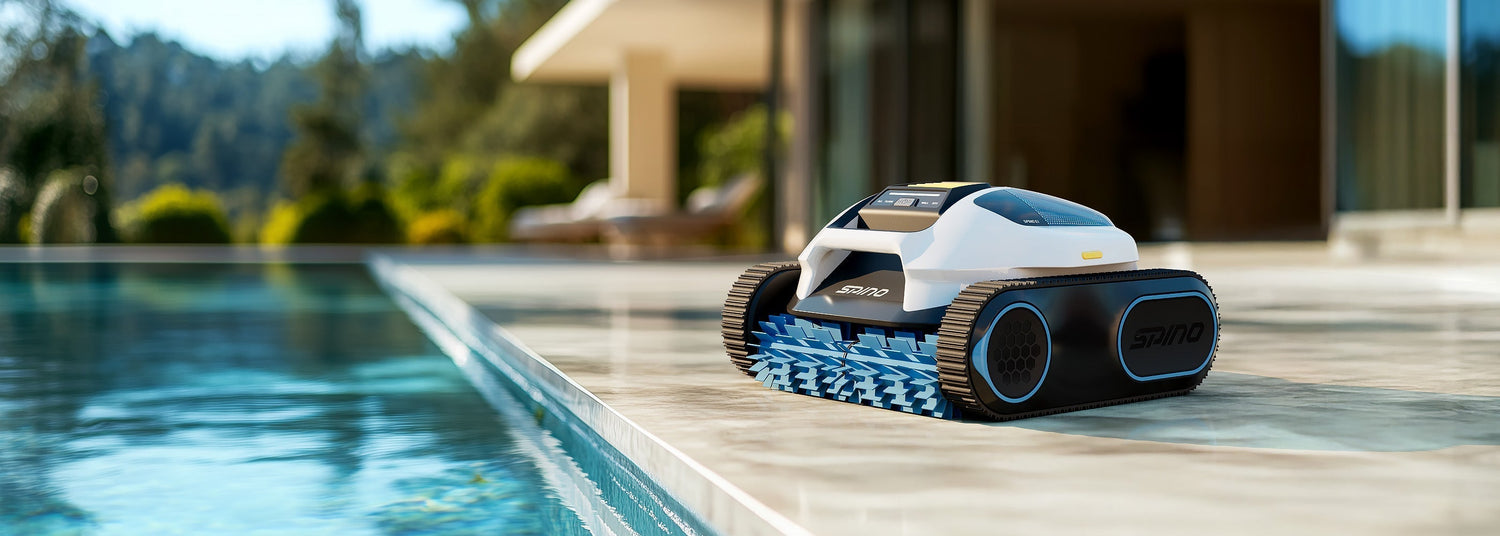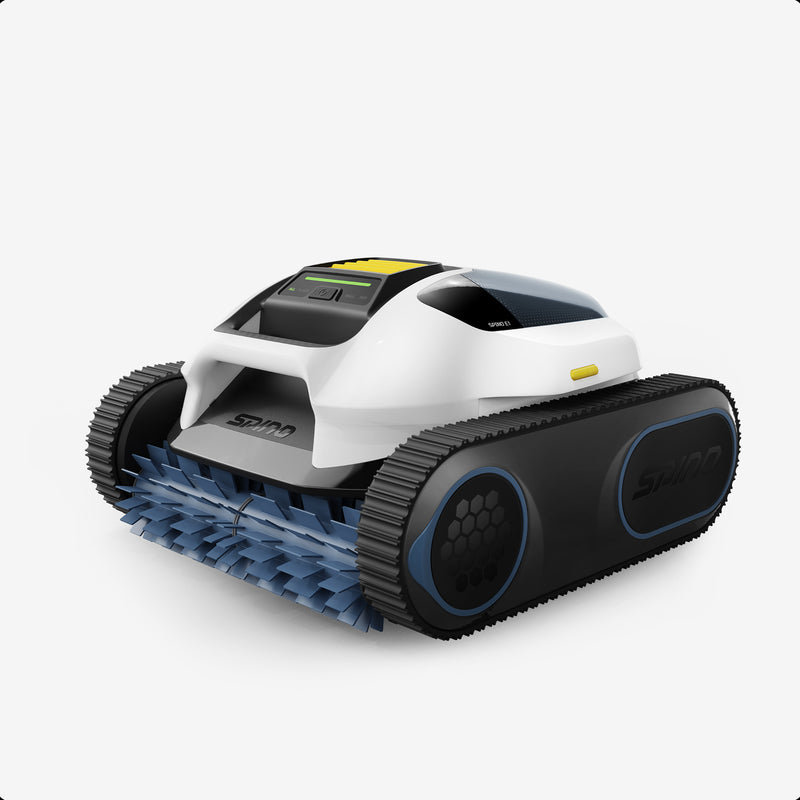Keeping your pool clean can be a time-consuming task—unless you have the right tools for the job. Two of the most popular automatic options are suction pool cleaners and robotic pool cleaners, but choosing between them isn’t always straightforward.
Each type offers unique benefits, and the right choice depends on factors like your budget, pool size, type of debris, and how hands-off you want the cleaning process to be. Suction cleaners are often more affordable and simple, while robotic models promise higher efficiency and advanced features.
In this article, we’ll compare suction and robotic pool cleaners across key criteria including cleaning performance, ease of use, energy consumption, maintenance needs, and cost. By the end, you’ll know which one better suits your needs—and your pool.
What Are Suction and Robotic Pool Cleaners?
Before diving into the comparison, it's important to understand how these two types of pool cleaners work.
Suction Pool Cleaners
These devices connect directly to your pool’s skimmer or dedicated suction port. They use your existing pool pump to create suction, which draws in dirt, leaves, and debris as the cleaner moves randomly across the pool floor and sometimes the walls. Because they rely on your pool’s circulation system, they typically run whenever the pool pump is on.

Robotic Pool Cleaners
Robotic cleaners are self-contained units with built-in motors, brushes, and filtration systems. They operate independently from your pool’s equipment and plug into a standard power outlet. Most models have intelligent navigation systems that allow them to clean floors, walls, and even the waterline with greater precision and efficiency. Some even come with smartphone apps or programmable schedules.
In short, suction cleaners are simple and pump-powered, while robotic cleaners are smart, energy-efficient machines designed for deep, thorough cleaning.

Feature Comparison: Suction vs Robotic Pool Cleaner
When comparing suction and robotic pool cleaners, it’s essential to look at how they perform in real-world scenarios. Below are five critical areas to consider.
1. Cleaning Performance
Robotic pool cleaners are known for their superior cleaning power. Equipped with rotating brushes, internal filters, and smart navigation systems, they clean not only the pool floor but also the walls and waterline. Many models follow efficient, pre-programmed paths that ensure full coverage.
Suction cleaners, on the other hand, follow a more random pattern. They do well in picking up fine debris like sand or dirt but may struggle with larger leaves or debris clusters. They also typically clean only the floor and partial walls, depending on suction power and pool design.
- If your pool collects a lot of debris or you want spotless walls and corners, robotic cleaners clearly outperform.
2. Ease of Use & Setup
Robotic cleaners are plug-and-play. Simply drop the unit into the pool, press a button, and let it do the work. Many modern models come with app controls or programmable schedules, making them ideal for people who want a hands-off experience.
Suction cleaners require connection to your pool’s filtration system, which may involve priming the hose, adjusting suction, or clearing the skimmer. They also depend on the pool pump being turned on during cleaning.
- For users seeking convenience and minimal manual effort, robotic models offer a far smoother experience.
3. Energy Efficiency
Robotic cleaners are surprisingly energy-efficient. They run on low-voltage electricity and consume an average of 100–200 watts per hour—roughly the same as a light bulb. Because they operate independently, they don’t add extra strain to your pool pump.
Suction cleaners, however, rely entirely on your existing pump and filter system. This means your pump must run longer to support the cleaner’s operation, leading to increased electricity usage and wear on your pool equipment.
- Over time, robotic cleaners tend to be more cost-efficient from an energy consumption perspective, especially if your pump is already running at high capacity.
4. Maintenance & Durability
Suction cleaners have fewer electronic parts, which makes them simpler in design and easier to troubleshoot. However, they rely heavily on your pool’s filtration system, which means you’ll need to clean the pump basket and filter more often. Hoses may also wear out or kink over time.
Robotic cleaners require regular filter or cartridge cleaning (usually after every use), but they’re built to be durable and operate independently of the pool’s plumbing. Some higher-end models come with self-cleaning features or full filter indicators.
- In terms of long-term reliability, robotic cleaners tend to last longer and require fewer service calls if properly maintained.
5. Price & Long-Term Cost
Suction pool cleaners are generally more affordable upfront, with basic models ranging from $200 to $500. Replacement parts like hoses or diaphragms are also inexpensive, making them budget-friendly for smaller or simpler pools.
Robotic pool cleaners cost more initially—anywhere from $500 to $1,500+, depending on features. However, they don’t require additional equipment usage (like the pool pump), and many owners report lower long-term costs thanks to energy savings and reduced system wear.
- It’s also worth noting that robotic cleaners typically come with better warranties (often 2–3 years), while suction cleaners may have shorter coverage.
If you're planning to stay in your home long-term and want reliable, high-performance cleaning, robotic cleaners often deliver better overall value despite the higher starting cost.
🔍 Quick Comparison Table: Suction vs Robotic Pool Cleaner
|
Feature |
Suction Pool Cleaner |
Robotic Pool Cleaner |
|
Cleaning Coverage |
Floor (sometimes walls) |
Floor, walls, and waterline |
|
Navigation |
Random movement |
Smart, programmed paths |
|
Power Source |
Pool pump suction |
Self-powered via electricity |
|
Installation |
Requires hose setup and pool system connection |
Plug-and-play; drop into pool and start |
|
Energy Efficiency |
Relies on pool pump (higher energy use) |
Low energy use (100–200 watts/hour) |
|
Maintenance Needs |
Frequent filter cleanings; hose upkeep |
Regular cartridge cleaning; low system wear |
|
Initial Cost |
$200–$500 |
$500–$1,500+ |
|
Best For |
Budget-conscious, small/simple pools |
Larger pools, heavy debris, set-it-and-forget users |
|
Lifespan |
Moderate (3–5 years) |
Longer (up to 8 years with proper care) |
Pros and Cons of Suction and Robotic Pool Cleaners
Choosing the right pool cleaner depends on your specific needs, and both suction and robotic models come with their own advantages and drawbacks. Here's a quick rundown:
Suction Pool Cleaners
Pros:
- Lower upfront cost
- Fewer electronic parts = simpler repairs
- Works well for basic cleaning tasks
- Easy to find replacement parts
Cons:
- Depends on pool pump, increasing energy use
- Less effective on large debris or vertical surfaces
- Requires more frequent maintenance of your pool’s filtration system
- Random cleaning patterns may miss spots
Robotic Pool Cleaners
Pros:
- Superior cleaning coverage, including walls and waterline
- Operates independently from pool system
- Energy-efficient and programmable
- Advanced features like smart navigation and app control
Cons:
- Higher initial investment
- Needs manual filter or cartridge cleaning
- May be overkill for small, simple pools
This pros-and-cons snapshot should help clarify which cleaner aligns better with your pool setup, lifestyle, and long-term expectations. Get more details about the cons of robotic pool cleaners here.
Suction vs Robotic Pool Cleaner: Which One Is Right for You?
Still unsure which type fits your needs? Consider your pool’s size, shape, and how much effort you want to put into maintenance.
Choose a Suction Pool Cleaner if you have a small to medium-sized pool with minimal debris, you're on a tight budget, and you don’t mind a bit of manual oversight. It’s a good entry-level solution for basic cleaning.
Go with a Robotic Pool Cleaner if your pool is larger, collects leaves or fine particles often, or you prefer automation and energy savings. It’s ideal for busy homeowners who want to “set it and forget it.”
Ultimately, both options will keep your pool clean—but robotic cleaners offer better performance and convenience, while suction cleaners offer simplicity and affordability. Match the cleaner to your pool type and your priorities.

Is It Worth Getting a Robotic Pool Cleaner?
Short word: Yes. If you're hesitant about the higher upfront cost of a robotic pool cleaner, it's worth considering the long-term benefits. Robotic models save time, reduce wear on your pool’s filtration system, and use significantly less energy than suction cleaners. Over time, these savings can offset the initial investment—especially if your pool sees frequent use or accumulates heavy debris.
Beyond cost, robotic cleaners deliver a level of convenience that suction systems simply can't match. From programmable cleaning cycles to smart navigation and app integration, they’re designed for modern pool owners who value efficiency. Anyway, really worth getting a robotic pool cleaner.
✅ Recommended Product: Spino E1 Robotic Pool Cleaner
If you're looking for a powerful, intelligent, and user-friendly solution, the Spino E1 robotic pool cleaner is a standout option. It features cordless operation, wall and waterline cleaning, and real-time app control. Whether you have a small residential pool or a larger setup, Spino E1 delivers premium cleaning with minimal effort.
Conclusion
Choosing between a suction and a robotic pool cleaner ultimately comes down to your priorities: cost, convenience, and cleaning performance.
Suction cleaners are affordable and straightforward, making them a solid choice for smaller pools and budget-conscious homeowners. Robotic cleaners, while more expensive upfront, offer superior cleaning power, energy efficiency, and a truly hands-off experience.
If you want a smart, long-term investment that saves time and delivers crystal-clear water with minimal effort, a robotic model like the Spino E1 is hard to beat.
Take the time to assess your pool’s needs—and choose the cleaner that fits both your lifestyle and your expectations.
Frequently Asked Questions
1. Are robotic pool cleaners better than suction cleaners?
Yes—for most pool owners, robotic cleaners outperform suction cleaners in several areas. They offer superior cleaning coverage (including walls and waterlines), operate independently of your pool's filtration system, and are more energy-efficient. However, suction cleaners still appeal to budget-conscious users or those with simpler pools who don’t need advanced features.
2. How much electricity does a robotic pool cleaner use?
Robotic cleaners are designed to be energy-efficient, typically using only 100–200 watts per hour. That’s about as much as a household light bulb. Compared to suction cleaners—which rely on your pool pump running for hours—robotic models help significantly reduce your monthly electricity bill over time.
3. Do robotic pool cleaners work on all pool types and surfaces?
Yes. Most robotic pool cleaners are engineered to clean all common pool surfaces, including vinyl, fiberglass, concrete, and gunite. Their intelligent traction systems and adaptable brushes allow them to handle pools of different shapes, slopes, and depths. Just make sure the model you choose is rated for your specific pool type and size.
4. Can I leave a robotic pool cleaner in the pool all the time?
While it’s okay to leave the cleaner in the pool during a cleaning cycle, it's not recommended to leave it submerged 24/7. Prolonged exposure to chlorine or saltwater can degrade the unit’s seals and electronic components. To extend its lifespan, remove it after use, rinse it, and store it in a shaded area.
5. What types of debris can suction cleaners handle effectively?
Suction cleaners do a good job with fine particles like sand, dust, and dirt. However, they tend to struggle with larger debris like leaves, acorns, or twigs, especially if your skimmer basket or filter gets clogged. For heavy leaf loads or larger debris, a robotic model with its own filter system is more effective.
6. How often should I clean a robotic cleaner’s filter or cartridge?
You should rinse and clean the filter after every 1–3 cleaning cycles, depending on your pool's debris load. Some newer models include full-filter indicators to let you know when it’s time to clean. Regular maintenance keeps the cleaner running efficiently and extends its operational life.
7. Is the higher cost of a robotic pool cleaner really worth it?
Absolutely—especially in the long run. While robotic cleaners come with a higher initial price, they pay off through energy savings, reduced strain on your pool equipment, and minimal manual effort. Many users also report needing fewer professional cleanings, further reducing long-term maintenance costs.
8. Can I use a robotic pool cleaner in a saltwater pool?
Yes, most robotic cleaners are compatible with saltwater systems. Just ensure the model is rated for saltwater use and rinse the unit with fresh water after each cleaning session to prevent salt corrosion.
9. Are robotic pool cleaners safe to operate around children and pets?
Yes, they operate on low-voltage DC power and are fully waterproofed. That said, it's best to supervise children while the unit is running and remove the robot before swimming to avoid any entanglement or obstruction.
10. What’s the best robotic cleaner to buy in 2025?
One of the top-rated models this year is the Spino E1 Robotic Pool Cleaner. It features cordless operation, smart app control, 360° cleaning, and an efficient dual-drive motor system—making it ideal for those who want maximum cleaning with minimum hassle.













